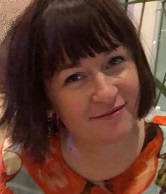A damning report into the lack of gender diversity in STEM dismissed unfounded claims that girls aren’t choosing to study STEM-related professions, instead highlighting the significant lack of government support for being the root cause of the problem.
The Federal Government’s annual pool of around $13 million into gender inequality in STEM falls well below what’s needed.
Spread across three years, that’s $4.3 annually, which, split across the four areas of STEM, equates to just $806,000 a year to tackle gender equity in technology, according to The Girl Geek Academy’s report, Enough Talk, published this week.
The report warns that Australia will not live up to its economic and technological potential given that just 36 per cent of women making up enrolments in university Science, Technology, Engineering and Maths courses, and that just 12 per cent of tech engineers are women.
It also highlighted a recent Deloitte report into digital entrepreneurship of Australian women, which saw a $1 billion dollar return from targeted investments to tech-based startups led by women.
“The reason gender equity is going backwards in tech is not because of a lack of evaluation of equity programs, it’s a lack of investment in the solutions that we already know work,” the report reads.
The Girl Geek Academy has gone a step further, outlining a number of specific recommendations for change.
These include developing a national action plan to lift diversity in technology, supporting diversity and inclusion in schools, prioritising the participation of women in STEM, and capturing better diversity and inclusion data so that participation can be better understood.
Girls and women passionate and interested in STEM are squeezed out of learning and industry at all stages of their career because the pipeline is built for men. The industry also fails to provide effective role models for women, its research found.
The answer lies in getting more girls and women into STEM needs to start from a young age, with bonus points offered to students to study technology in years 11 and 12, and the creation of a gender equity jobs guarantee to ensure the 1.2 million jobs in the industry are gender equal, the report suggests.
The report findings are similar to a report last year that found the technology sector continues to lag behind the Australian workforce and comparable occupations in terms of female representation, with females making up just 31 per cent of workers in the tech workforce.
This compares to 48 per cent of the Australian workforce as a whole.
The ACS Digital Pulse report by Deloitte also found that once women secure a role, they are victimised, with nearly two thirds (64 per cent) of women also experiencing some form of discrimination at work.
However, the proportion of women in technology is growing. Between 2021 and 2022, the [NH1] proportion of women in technology occupations increased by 1.85 percentage points.
The Workplace Gender Equality Agency (WGEA) warns that achieving equal participation across occupations and sectors will not happen within most working women’s lifetime.
While growing participation in the workforce represents economic equality for women and will see household incomes rise, Australia’s gender-segregated workforce will take a long time to shift, Danielle Wood, CEO of public policy think tank The Grattan Institute warned.
Meanwhile, the University of South Australia also published a report about women in STEM in April, which blamed toxic workplaces for driving women out of the industry.
It highlighted an entrenched or hostile work culture that associates STEM careers with men and not women and the misplaced belief that women (especially mothers) have different skillsets to men.
Report co-author Dr Florence Gabriel said the obstacles raised by women working in the sector should be a red flag as they continue to exacerbate critical STEM industry workforce shortages.
“Diversity is not just an ethical concern or a box to tick. According to a recent study of 1,000 companies worldwide, those in the top 25 per cent for gender diversity were found to be 21 per cent more likely to be profitable and 27 per cent more likely to be creative,” Dr Gabriel said.
The good news is that there are some smaller initiatives making a difference at a grassroots level, including the recently announced BrainSTEM grant that will enable ACS to provide opportunities to 120 high school girls along with 30 mentors and teachers to participate in a range of STEM mentoring programs that aims to funnel participants into the industry.
Made available thanks to a Federal Government grant, the initiative will run from August to November this year, allowing for several engagement and learning opportunities for participants.










